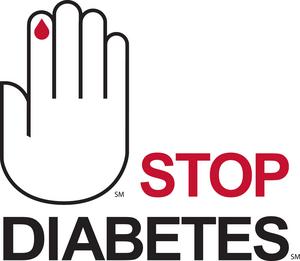Prediabetes, But Nearly No One Knows
 In early March 2010, a research article titled Diabetes Risk Reduction Behaviors Among U.S. Adults with Prediabetes published in American Journal of Preventive Medicine, put in writing what many experts (including myself) conjectured. Data analyzed by the Division of Diabetes Translation at CDC, the National Institutes of Health diabetes division and Emory University’s School of Public Health, from the most recent National Health and Nutrition Examination Survey (NHANES) showed that of the enormous population of 57 million people in the U.S. with prediabetes (30% of our population), only 7.3% of people have been told by their healthcare provider that they have prediabetes.
In early March 2010, a research article titled Diabetes Risk Reduction Behaviors Among U.S. Adults with Prediabetes published in American Journal of Preventive Medicine, put in writing what many experts (including myself) conjectured. Data analyzed by the Division of Diabetes Translation at CDC, the National Institutes of Health diabetes division and Emory University’s School of Public Health, from the most recent National Health and Nutrition Examination Survey (NHANES) showed that of the enormous population of 57 million people in the U.S. with prediabetes (30% of our population), only 7.3% of people have been told by their healthcare provider that they have prediabetes.
And even more concerning, if that’s not enough, is that only half of this small number of people reported acting on diabetes risk reduction behaviors (such as losing weight, being more active, etc.) Yes, some of the fault lands in our healthcare providers’ laps. The study showed only about one third of the small number of adults diagnosed with prediabetes noted they had received advice about the diabetes risk reduction behaviors.
Research over the last decade has made it clearer than ever before that developing prediabetes and type 2 is a continuum that relates to both risk factors for type 2 diabetes and excess weight. Excess weight, as it is said, pulls the trigger if your gun is loaded – set up genetically to develop type 2. Learn more about how excess weight puts you at risk for prediabetes and type 2 and take the American Diabetes Association's diabetes risk test.
If you think you're at risk or have prediabetes, get a blood test. Know that if an A1C, which measures blood glucose over the past two to 3 months, is > 6.0% and < 6.4% that is classified as prediabetes (6.5% or higher is diabetes). Measuring blood glucose can also still be used to diagnose prediabetes: fasting >100 and <126 and/or random >140 and <199.
What’s particularly concerning about this data (though I have many concerns for our health and healthcare expenditures), is that the time at which people can have the greatest bang for their effort on preventing and/or delaying further metabolic decline and progression to type 2 is as soon as possible after onset. But if we aren’t detecting it early (or at all) people are on a steady course towards type 2 diabetes. This is where the tidal wave of type 2 diabetes lies.
But, putting these so called diabetes risk reduction behaviors into action is way easier said than done.
The goals, as has been said many times, aren't drastic or dramatic. Number one: lose 5 to 7% (~ 10 to 20 pounds) from your starting weight by choosing healthier foods, eating fewer calories and trimming the fats. Next, work towards fitting in 30 minutes of physical activity five times a week. Make lifestyle changes for the long haul. The goal is blood glucose control and reversing or stemming the tide toward type 2 diabetes. To learn more about easy ways to change your eating habits get my book Diabetes Meal Planning Made Easy, just out as a 4th edition (March, 2010). The approach is simple changes make a BIG difference.
Take Action NOW, don’t DELAY! And please spread the word.

